Related Research Articles
The decibel is a relative unit of measurement equal to one tenth of a bel (B). It expresses the ratio of two values of a power or root-power quantity on a logarithmic scale. Two signals whose levels differ by one decibel have a power ratio of 101/10 or root-power ratio of 101/20.

Gunpowder, also commonly known as black powder to distinguish it from modern smokeless powder, is the earliest known chemical explosive. It consists of a mixture of sulfur, charcoal, and potassium nitrate (saltpeter). The sulfur and charcoal act as fuels while the saltpeter is an oxidizer. Gunpowder has been widely used as a propellant in firearms, artillery, rocketry, and pyrotechnics, including use as a blasting agent for explosives in quarrying, mining, building pipelines, tunnels, and roads.
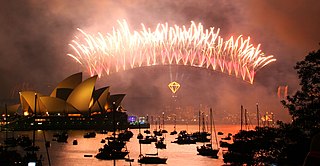
Fireworks are low explosive pyrotechnic devices used for aesthetic and entertainment purposes. They are most commonly used in fireworks displays, combining a large number of devices in an outdoor setting. Such displays are the focal point of many cultural and religious celebrations, though mismanagement could lead to fireworks accidents.

A microphone, colloquially called a mic, or mike, is a transducer that converts sound into an electrical signal. Microphones are used in many applications such as telephones, hearing aids, public address systems for concert halls and public events, motion picture production, live and recorded audio engineering, sound recording, two-way radios, megaphones, and radio and television broadcasting. They are also used in computers and other electronic devices, such as mobile phones, for recording sounds, speech recognition, VoIP, and other purposes, such as ultrasonic sensors or knock sensors.
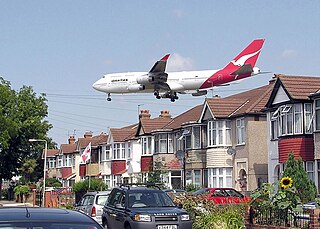
Noise pollution, or sound pollution, is the propagation of noise or sound with ranging impacts on the activity of human or animal life, most of which are harmful to a degree. The source of outdoor noise worldwide is mainly caused by machines, transport and propagation systems. Poor urban planning may give rise to noise disintegration or pollution, side-by-side industrial and residential buildings can result in noise pollution in the residential areas. Some of the main sources of noise in residential areas include loud music, transportation, lawn care maintenance, construction, electrical generators, wind turbines, explosions and people.

Diwali is the Hindu festival of lights, with variations celebrated in other Indian religions. It symbolises the spiritual "victory of light over darkness, good over evil, and knowledge over ignorance". Diwali is celebrated during the Hindu lunisolar months of Ashvin and Kartika—between around mid-September and mid-November. The celebrations generally last five or six days.

A pipe bomb is an improvised explosive device (IED) that uses a tightly sealed section of pipe filled with an explosive material. The containment provided by the pipe means that simple low explosives can be used to produce a relatively large explosion due to the containment causing increased pressure. The fragmentation of the pipe itself creates potentially lethal shrapnel.

A leaf blower, commonly known as a blower, is a device that propels air out of a nozzle to move debris such as leaves and grass cuttings. Leaf blowers are powered by electric or gasoline motors. Gasoline models have traditionally been two-stroke engines, but four-stroke engines were recently introduced to partially address air pollution concerns. Leaf blowers are typically self-contained handheld units, or backpack mounted units with a handheld wand. The latter is more ergonomic for prolonged use. Larger units may rest on wheels and even use a motor for propulsion. These are sometimes called "walk-behind leaf blowers" because they must be pushed by hand to be operated. Some units called blower vacs, can also suck in leaves and small twigs via a vacuum, and shred them into a bag.

A firecracker is a small explosive device primarily designed to produce a large amount of noise, especially in the form of a loud bang, usually for celebration or entertainment; any visual effect is incidental to this goal. They have fuses, and are wrapped in a heavy paper casing to contain the explosive compound. Firecrackers, along with fireworks, originated in China.
The permissible exposure limit is a legal limit in the United States for exposure of an employee to a chemical substance or physical agent such as high level noise. Permissible exposure limits were established by the Occupational Safety and Health Administration (OSHA). Most of OSHA's PELs were issued shortly after adoption of the Occupational Safety and Health (OSH) Act in 1970.

"Black snake" is a term that can refer to at least three similar types of fireworks: the Pharaoh's snake, the sugar snake, or a popular retail composition marketed under various product names but usually known as "black snake". The "Pharaoh's snake" or "Pharaoh's serpent" is the original version of the black snake experiment. It produces a more impressive snake, but its execution depends upon mercury (II) thiocyanate, which is no longer in common use due to its toxicity. For a "sugar snake", sodium bicarbonate and sugar are the commonly used chemicals.

A sound level meter is used for acoustic measurements. It is commonly a hand-held instrument with a microphone. The best type of microphone for sound level meters is the condenser microphone, which combines precision with stability and reliability. The diaphragm of the microphone responds to changes in air pressure caused by sound waves. That is why the instrument is sometimes referred to as a sound pressure level meter (SPL). This movement of the diaphragm, i.e. the sound pressure, is converted into an electrical signal. While describing sound in terms of sound pressure, a logarithmic conversion is usually applied and the sound pressure level is stated instead, in decibels (dB), with 0 dB SPL equal to 20 micropascals.
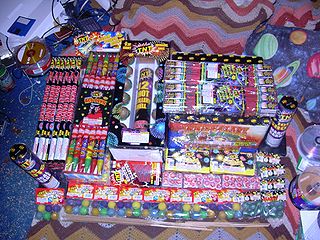
Consumer fireworks are fireworks sold for use by the general public. They are generally weaker in explosive power than the fireworks used in professional displays.
The loudest band in the world is a subject of some dispute in musical circles. Many bands have claimed to be the loudest, measuring this in various ways including with decibel meters at concerts and by engineering analysis of the CDs on which their albums are published. The Guinness World Records no longer celebrates "The Loudest Band in the World" for fear of promoting hearing loss.

Awaaz Foundation is a charitable trust and non-governmental organisation in Mumbai, India which builds awareness, carries out advocacy, and is involved in educational projects to protect the environment and prevent environmental pollution. It has impacted many important decisions by the government and influenced policy making in important environmental matters in India. The beneficiaries of the Foundation are the citizens of India at large.

A chocolate bomb is a firecracker which is exploded by revelers during Diwali and New Year's Eve celebrations in India. Chocolate bombs are made of tiny paperboard boxes stuffed with gunpowder. A fuse is inserted in one of the corners. The boxes are then tightly wrapped with jute strings and dried in the sun for three days. After that they are wrapped with colorful aluminum foil, making them resemble chocolates. The Burima brand of chocolate bombs were very popular in Kolkata in the 1990s. The firecracker has been declared illegal in West Bengal.
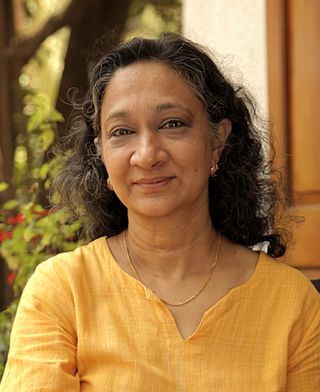
Sumaira Abdulali, born 22 May 1961 is an environmentalist from Mumbai, India, founder of the NGO Awaaz Foundation and convenor of the Movement against Intimidation, Threat and Revenge against Activists (MITRA). She was co-chairman of the Conservation Subcommittee and honorary secretary of Asia's oldest and largest environmental NGO, the Bombay Natural History Society, and was a Governing Council Member between 2008 and 2021.

On 10 April 2016 at approximately 03:30 AM IST, the Puttingal Temple in Paravur, Kollam, Kerala, India, experienced a fireworks accident after firework celebrations went awry. As a result, 111 people were killed and more than 350 were injured, including some with severe burns. The temple and at least 150 houses in the area of the temple were damaged by the blast. According to local reports and eyewitnesses, the explosion and fire were caused by sparks from a firecracker being used in a competitive fireworks display igniting fireworks in a concrete storehouse. About 15,000 pilgrims were visiting the temple to mark local Hindu celebrations during the last day of a seven-day festival of the goddess Bhadrakali.
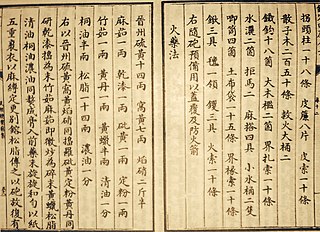
In the history of gunpowder there are a range of theories about the transmission of the knowledge of gunpowder and guns from Imperial China to the rest of the world following the Song, Jin and Yuan dynasties. The earliest bronze guns found in China date back to the 13th century, with archaeological and textual evidence for previous nascent gunpowder technology developed beforehand. Scholars note the scarcity of records for firearms in the Middle East prior to the mid-14th century, and in Russia before the late 14th century, yet cannons already appeared in Europe by the early 14th century. Less accepted theories include gunpowder as being independently invented in the Middle East or South Asia.

A firecracker is a small explosive device primarily designed to produce a large amount of noise, especially in the form of a loud bang, usually for celebration or entertainment. They have fuses, and are wrapped in a heavy paper casing to contain the explosive compound. Firecrackers, along with fireworks, originated in China. They are easily available in India and are used to mark a celebratory event. Anyone 18 and over can buy them without a license if allowed by the local laws.
References
- ↑ "City anchor: Vulcano sutli bomb, Thunderbomb are back to blast your ears - Indian Express". www.indianexpress.com. Archived from the original on 2012-11-14.
- ↑ "'Sutli bomb' the noisiest - Times of India". The Times of India . Archived from the original on 3 December 2013. Retrieved 17 January 2022.
- ↑ "Beware of 'sutli' bomb during Diwali, warns MPCB | States News". 12 October 2008.
- ↑ "Sutli bomb: Big bang, no ban - Mumbai Mirror". www.mumbaimirror.com. Archived from the original on 2013-12-03.